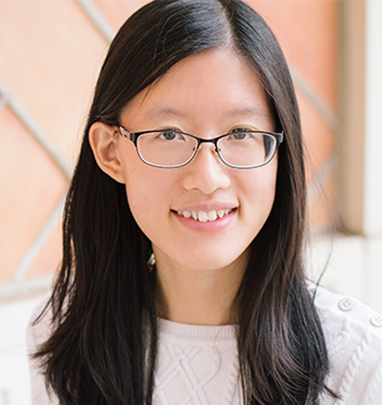Pricing and processing data far from the cloud
IoT devices are coming online, and Carlee Joe-Wong wonders how we might put prices on them.
The Internet of Things (IoT), mobile networks, and edge devices have become integral to daily life. Plenty of devices have enough computing power to process large amounts of data far from a centralized entity like the cloud. Computing this way offers faster networks and smart buildings.
With their everydayness, how might one take an eye off their tasks and rather assess their economics?
Electrical and Computer Engineering (ECE) Assistant Professor Carlee Joe-Wong is working to establish the economic foundations for the next generation of computing. She noticed that despite the rising trend in the diversity of computing devices, nobody had seriously researched or discussed the economics. The National Science Foundation has given Joe-Wong a CAREER Award to explore this field so ripe for discovery.
Joe-Wong is trying to create an architecture for pricing usage of devices in the IoT that other innovators and companies can respond to and utilize. To her, “Figuring out how to price mobile networks is still an open question.” She outlines some possible options: one is to use flat-fee plans that allow customers “unlimited” access; another is to use data-capped plans that require monthly payment for a specific amount of use, such as only five GB for a monthly cellular data plan.

Source: Carnegie Mellon University College of Engineering
ECE Assistant Professor Carlee Joe-Wong
“My proposed work posits that, in the future, access to mobile networks will be sold in bundles, the devices accessing combined plans on other networks,” Joe-Wong says. A customer would pay for a plan sharing, for instance, mobile with Wi-Fi networks. Joe-Wong points out that this network access strategy has precedent. “AT&T sells bundled access to cellular and Wi-Fi networks, and Google Fi aggregates Sprint, T-Mobile, and US Cellular networks with Wi-Fi,” she says.
But network users need different things from their plans, depending on the devices they employ. IoT devices, from smart fridges to security cameras, require different arrays of data to use with their hardware and software. Joe-Wong’s proposal makes room for these realities. She proposes two forms of pricing: “simple, flat-rate plans aggregating access to multiple networks, and more dynamic plans where users bid for access on different networks according to their needs.”
As the IoT develops, innovation and consumer interest could be determined by commercial pricing. Joe-Wong advocates for a sound strategy, wanting to “develop new types of pricing algorithms” for the IoT. More importantly, she wants to investigate these models’ viability, and “whether they disproportionately benefit certain types of users.” She suggests also that new pricings may spur development or take advantage of existing technology. One scenario she proposes is that a user finds it far easier to run machine learning software across multiple devices. Something like an aggregated data plan could make this possible.
For the short term, though, Joe-Wong wonders about how her work could apply to the industry. “Service providers might apply my findings to determine how to price access to mobile and computing networks for IoT applications,” she says. Regardless, she may just lay the groundwork for future pricing strategies and how IoT devices might integrate more into our lives.
